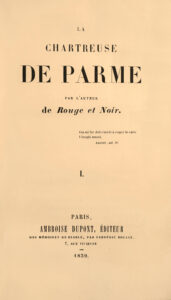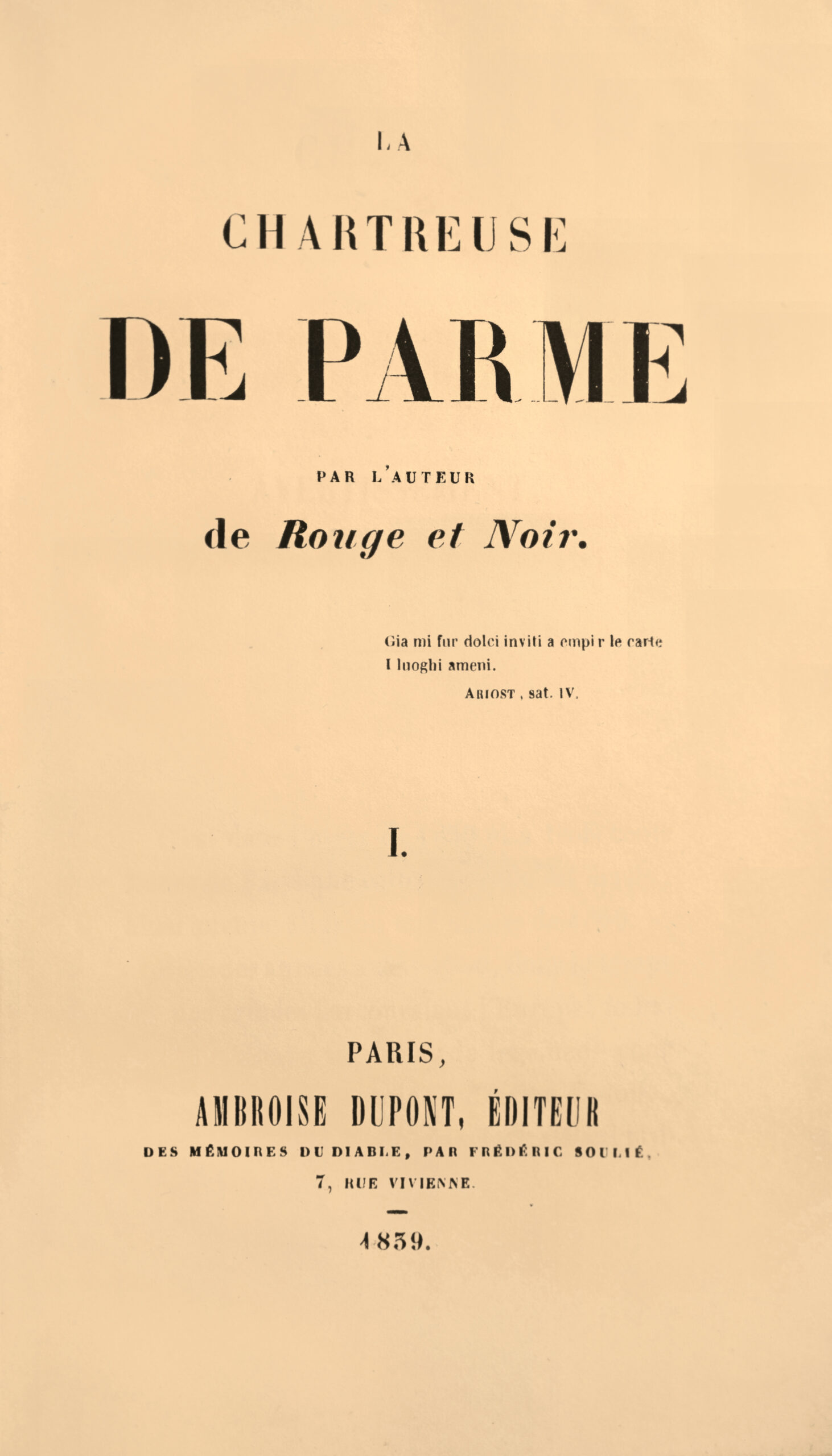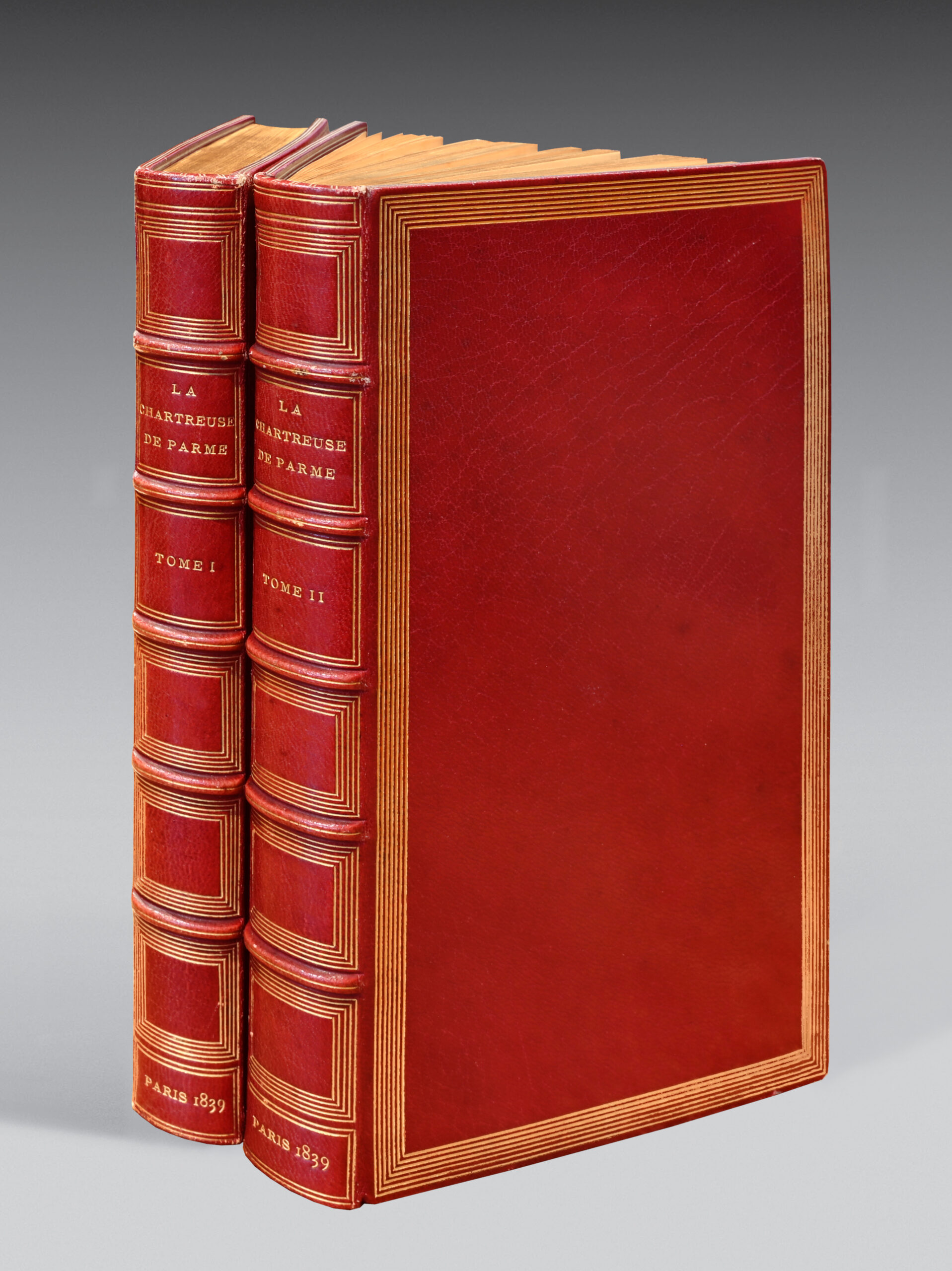Paris, Dupont, 1839.
2 parts in 2 volumes 8vo of : I/ (2) ll. for the half-title and the title, 402 pp. ; II/ (2) ll. for the half-title and the title, 445 pp.
Full red morocco, six gilt fillets around the covers, ribbed spines decorated the same way, inner border of five gilt fillets, gilt edges. Elegant binding by Chambolle-Duru.
213 x 126 mm.
First edition, printed on vellum, of one of the most coveted novels of the 19th century.
Carteret, Le Trésor du bibliophile romantique, 358; Vicaire, Manuel de l’amateur de livres du XIXe siècle, 458; Picot, Catalogue du baron Rothschild, 1584.
“Very rare and extremely sought after”. M. Clouzot, 257.
“Balzac published a glowing article about Stendhal and his book in the Revue parisienne of 25 September 1840: ‘M. Beyle has written a book in which the sublime bursts forth from chapter to chapter. He has produced, at an age when men rarely find grandiose subjects and after having written some twenty extremely spiritual volumes, a work that can only be appreciated by truly superior souls and people. Finally, he wrote the modern Prince, the novel that Machiavelli would write if he lived banished from Italy in the nineteenth century”.
Stendhal drêmed of writing a novel about the life of Alexander Farnese (1468-1549); he was also working on a story about the Battle of Waterloo.
His work took shape on 3 September 1838 when he decided to bring the events revêled to him by the Italian chronicle into the 19th century, so that his hero would be at Waterloo and Stendhal could indulge in a satire of absolutism by depicting a small Italian court around 1820.
“In this ‘Chartreuse de Parme’, Stendhal excels in translating all his idêls of art and life, the now distant mirage of glory and the Napoleonic epic, the passion for adventure, the deep love for contemporary Italy and for the much admired Italy of the Renaissance, but above all the love of love.
The refined psychological analyses, the obstinate and precise rigour of the style, the philosophical and moral considerations, everything is transfigured in the rare joy of a lyrical vision which, in the best pages, rêches the rhythmic purity of a song”.
It has now taken its place in French literature as one of the landmark books of 19th century literature and the culmination of the refined psychology of the 18th century.
Bibliographers are unanimous in emphasizing the rarity of this first edition.
Stendhal wrote La Chartreuse de Parme between 4 November and 26 December 1838 after having written L’Abbesse de Castro. La Chartreuse de Parme, written in a state of grace lasting fifty-two days, has since become the perfect image of the “joy of writing”.
His novel grew out of his plans for a Napoleonic narrative centered on the Battle of Waterloo and his interest in the history of Alexander Farnese (the future Pope Paul III), whose life overlapped with many of the events in Fabrice del Dongo’s life.
Stendhal’s contemporaries gave the novel an enthusiastic reception, as evidenced by Balzac’s famous letter to Stendhal: “La Chartreuse is a grêt and bêutiful book, I tell you without flattery, without envy, because I would be incapable of doing it”.
A very fine copy of this grêt classic of French literature, preserved in a superb binding by Chambolle-Duru.



